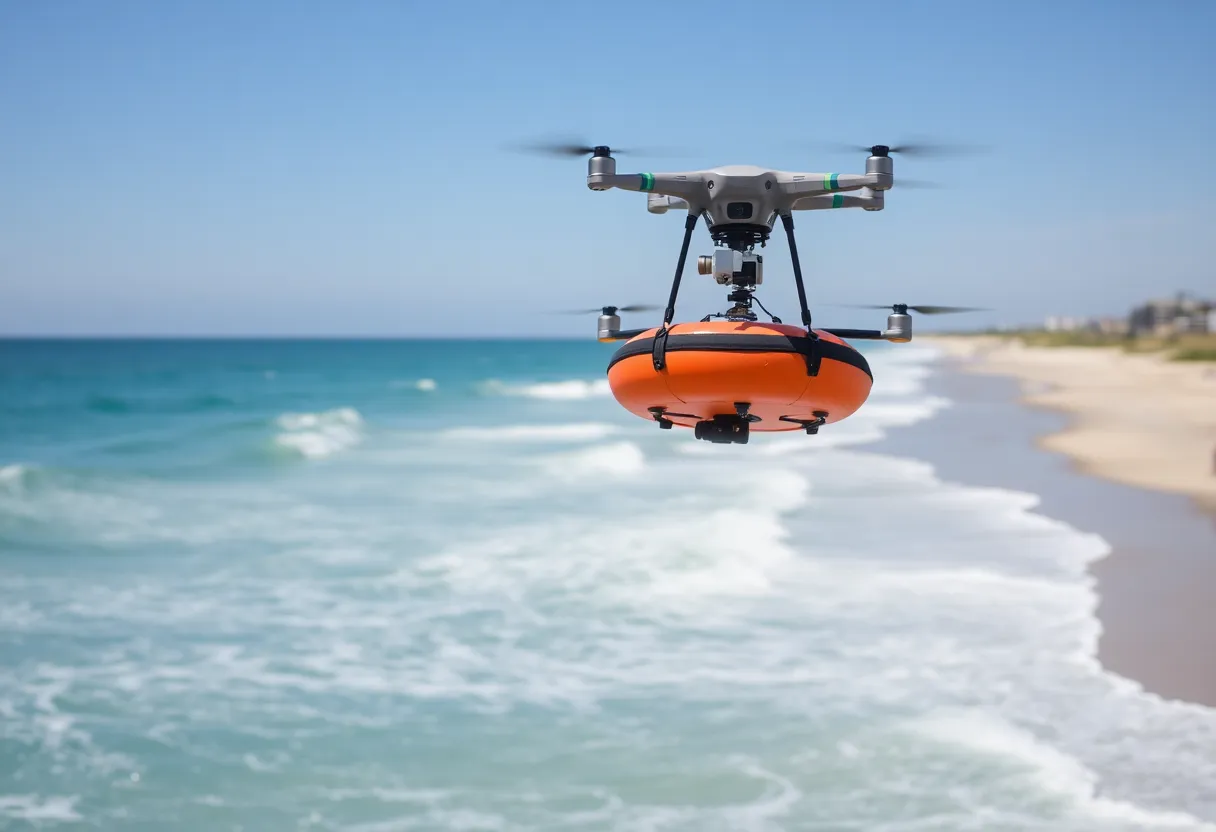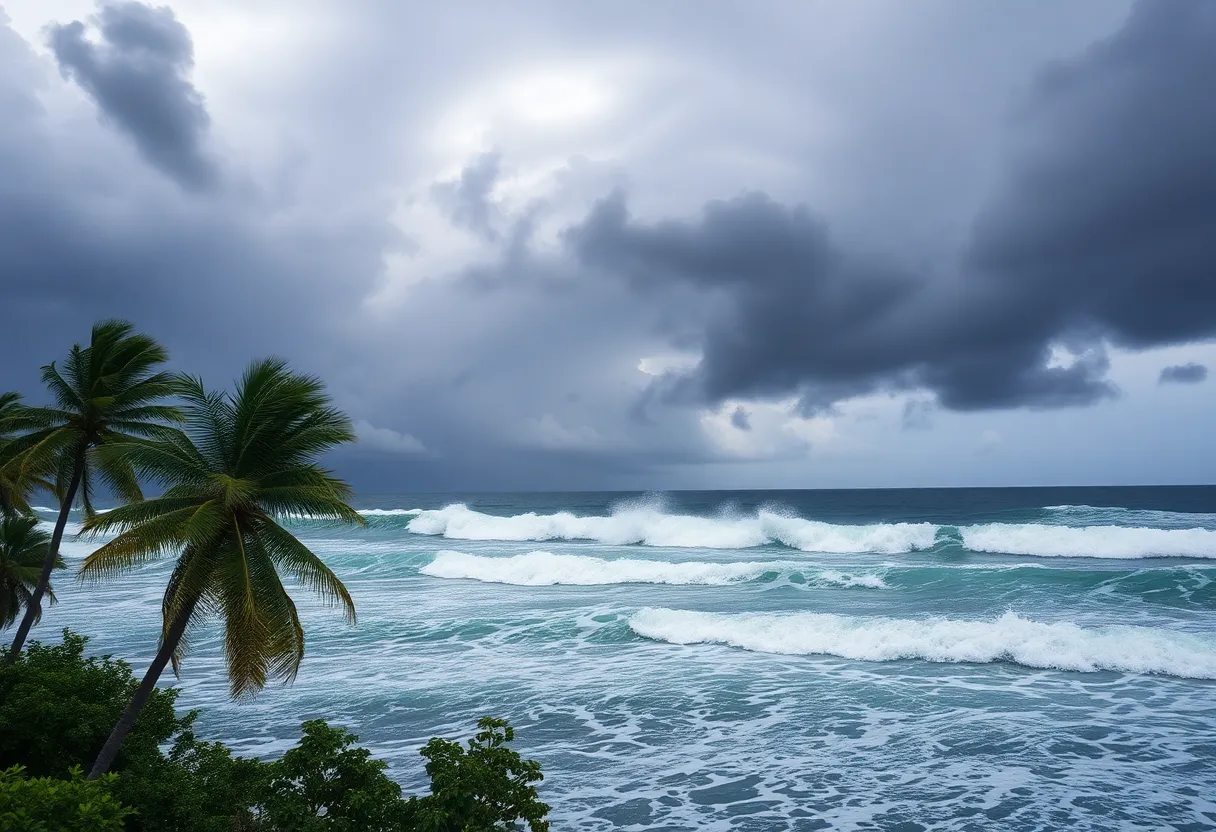News Summary
A local fisherman used a drone to save a teenage girl caught in a dangerous rip current at Pensacola Beach. Unable to swim himself due to a medical condition, he cleverly tied a flotation device to his drone. After two attempts, he successfully delivered the device to the girl, helping her stay afloat until help arrived. The incident highlights the importance of beach safety and the role of technology in emergency situations.
Florida witnessed a remarkable rescue on Thursday, May 15, 2025, when Andrew Smith, a local shark fisherman, saved a teenage girl from a perilous rip current using his drone and a flotation device, all while remaining safely onshore. The dramatic event unfolded at Pensacola Beach, just minutes after Smith arrived to enjoy a fishing outing.
Shortly after setting up, a young girl approached Smith and other beachgoers in a state of distress, urgently seeking someone to swim out to save her friend who was caught in a strong rip current. Despite his intentions to help, Smith was unable to enter the water due to a seizure disorder that prevented him from swimming. Determined to assist, he relied on the technology he had on hand: a drone, which he uses for positioning bait while shark fishing.
Recognizing the potential of the drone, Smith promptly tied a flotation device to it, stating that while he couldn’t swim, the drone could help save a life. His first attempt to deploy the drone faced challenges as strong winds caused him to release the flotation device prematurely, missing the girl in need. The situation became increasingly urgent as the girl struggled in the water for approximately five minutes, prompting another bystander to provide Smith with a second flotation device.
With a renewed sense of urgency and a better approach, Smith maneuvered the drone more carefully for the second attempt. This time, the operation was successful: the girl reached out, grasped the flotation device, and was able to hold onto it, allowing her to float until first responders arrived. Emergency services arrived on the scene about five minutes later, providing confirmation that without the flotation device delivered by the drone, the girl’s survival would have been unlikely.
Medical personnel later evaluated the girl, who was sent home with good health following the ordeal. Local emergency medical services, police, and lifeguards were quick to acknowledge the significance of Smith’s actions during the rescue, pointing out that his quick thinking and resourcefulness were critical in averting a tragedy at the beach.
Witnesses to the event expressed their admiration for Smith’s bravery and innovation, highlighting the heroic nature of his actions. One bystander filmed the entire rescue and remarked on Smith’s efforts, deeming him a “true hero.” The girl’s father voiced profound gratitude, referring to Smith as his daughter’s “guardian angel” for his role in ensuring her safety.
This incident also sheds light on the importance of beach safety, particularly regarding rip currents, which can pose significant hazards to swimmers. Smith took this opportunity to highlight the necessity of adhering to beach flag warning systems; on the day of the rescue, there was a red flag displayed indicating hazardous conditions. The beach had no lifeguard presence until after Memorial Day on May 26, which complicated the rescue situation further.
The rescue using the drone is a significant example of how technology can enhance safety measures at beaches, especially in scenarios where human intervention may not be feasible. As people prepare to enjoy coastal recreational activities this summer, the incident serves as a reminder of the importance of awareness and preparation regarding safety at the beach.
Deeper Dive: News & Info About This Topic
- CBS News
- ABC 7 Chicago
- WSVN
- The Guardian
- CBS 12
- Wikipedia: Rip Current
- Google Search: Rip Current Safety
- Google Scholar: Drone Rescue Operations
- Encyclopedia Britannica: Rip Current
- Google News: Drone Rescue

Author: STAFF HERE ORLANDO WRITER
ORLANDO STAFF WRITER The ORLANDO STAFF WRITER represents the experienced team at HEREOrlando.com, your go-to source for actionable local news and information in Orlando, Orange County, and beyond. Specializing in "news you can use," we cover essential topics like product reviews for personal and business needs, local business directories, politics, real estate trends, neighborhood insights, and state news affecting the area—with deep expertise drawn from years of dedicated reporting and strong community input, including local press releases and business updates. We deliver top reporting on high-value events such as Orlando International Fringe Theatre Festival, Megacon Orlando, and Central Florida Fair. Our coverage extends to key organizations like the Orlando Economic Partnership and Hispanic Chamber of Commerce Metro Orlando, plus leading businesses in leisure and hospitality that power the local economy such as Walt Disney World Resort, AdventHealth, and Universal Orlando. As part of the broader HERE network, including HEREJacksonville.com, HEREPetersburg.com, HERETallahassee.com, and HERETampa.com, we provide comprehensive, credible insights into Florida's dynamic landscape.




